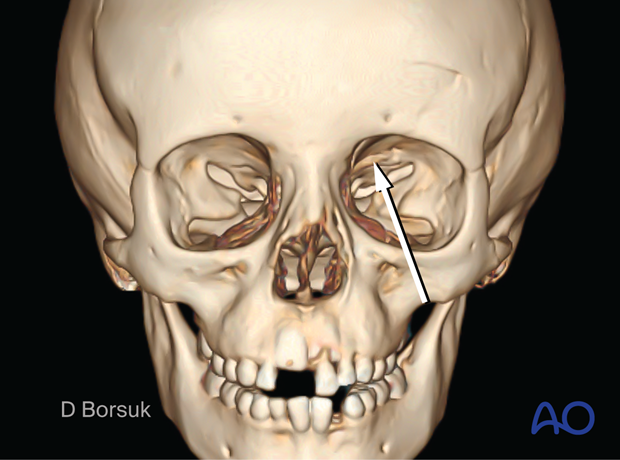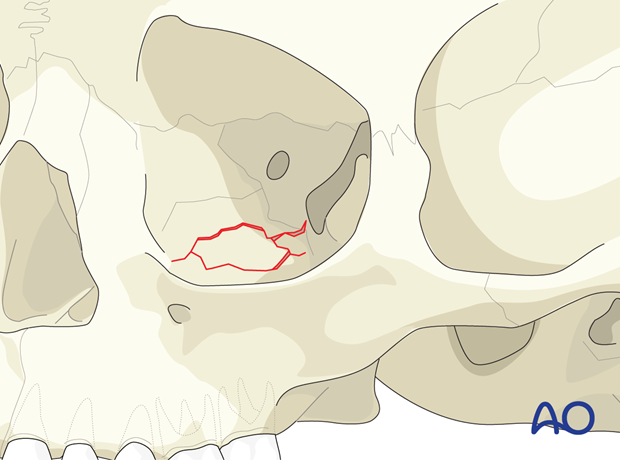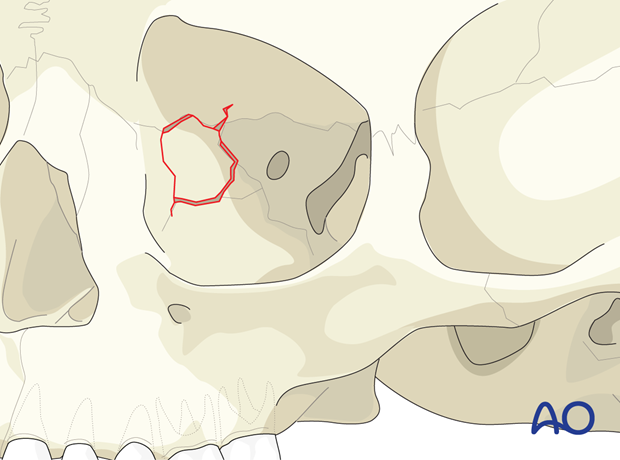Observation
Due to the high incidence of greenstick fractures and the rapid reossification and remodeling, conservative treatment is often the best treatment in a pediatric patient.
Please refer to general considerations on pediatric fractures for further details.
Orbital roof fractures are more common in children than in adults due to the absence of sinuses. In children, we tend to observe fractures of the roof that cause no functional or esthetic changes.
Ophthalmological evaluation should be performed on all children who suffer orbital fractures.

Most nondisplaced or minimally displaced orbital floor fractures that do not have soft tissue or muscle entrapment and do not affect globe position should be treated with observation and close follow-up.
Ophthalmological evaluation should be performed on all children who suffer orbital fractures.

Medial and lateral orbital wall fractures that do not change the globe’s position and do not cause functional visual changes should be treated with observation and close follow-up.
Ophthalmological evaluation should be performed on all children who suffer orbital fractures.

Follow-up
Due to bone remodeling and bone growth, fractures usually heal without any sequela.
Follow-up is performed at three weeks, once the swelling has subsided, to reevaluate if any functional or esthetic issues have arisen.













